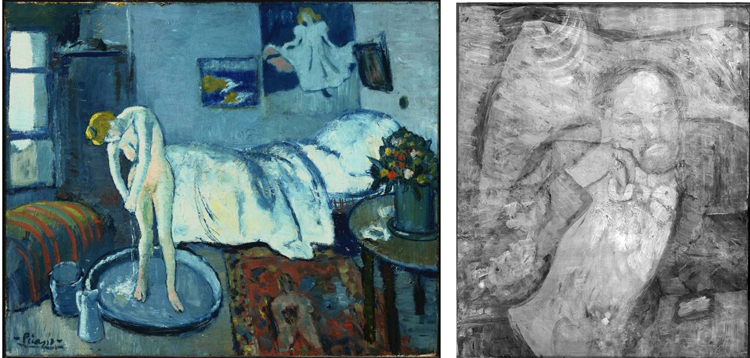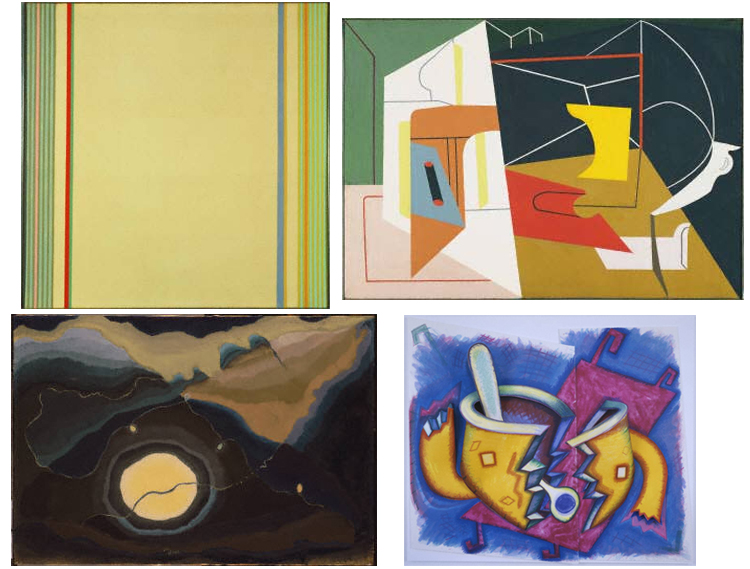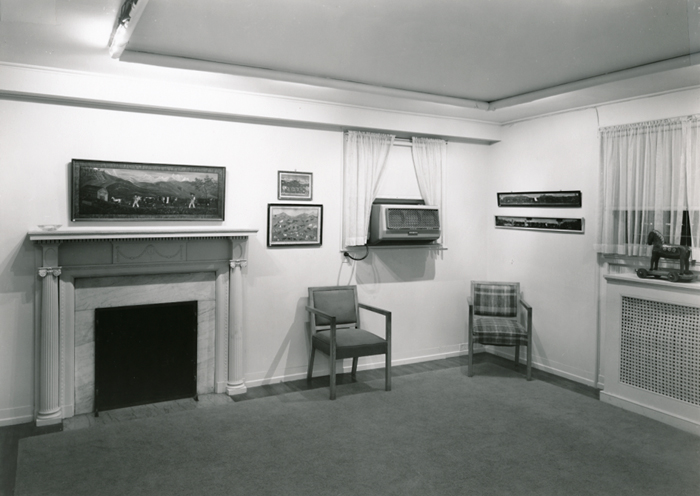
(Left) Pablo Picasso, The Blue Room, 1901, Oil on canvas 19 7/8 x 24 1/4 in.; 50.4825 x 61.595 cm. Acquired 1927. (Right) Infrared of Pablo Picasso’s The Blue Room (1901). The Phillips Collection, copyright 2008.
Perhaps you’ve heard our big news of the day: thanks to the skillful work and research of Patricia Favero and colleagues at fellow institutions, a portrait of a man has been identified under Picasso’s The Blue Room (1901) through the use of imaging technology. We’re really proud of Patti’s discovery!
This is not the first time one of our excellent conservators has made a newsworthy discovery. Just one example is chief conservator Elizabeth Steele’s and then-intern Gillian Cook’s finding of an entirely complete canvas beneath Gifford Beal’s painting, Parade of Elephants (1924) back in 1999. The uncovered work, On the Hudson at Newburg (1918), has gone on to become a most beloved part of our collection.

Two paintings by Gifford Beal that, at one time, shared a stretcher. (Left) On the Hudson at Newburgh, 1918, Oil on canvas 36 x 58 1/2 in.; 91.44 x 148.59 cm.. Estate of Gifford Beal, courtesy of Kraushaar Galleries. (Right) Parade of Elephants, 1924, Oil on canvas 36 1/8 x 58 5/8 in.; 91.7575 x 148.9075 cm.. Acquired 1924.




